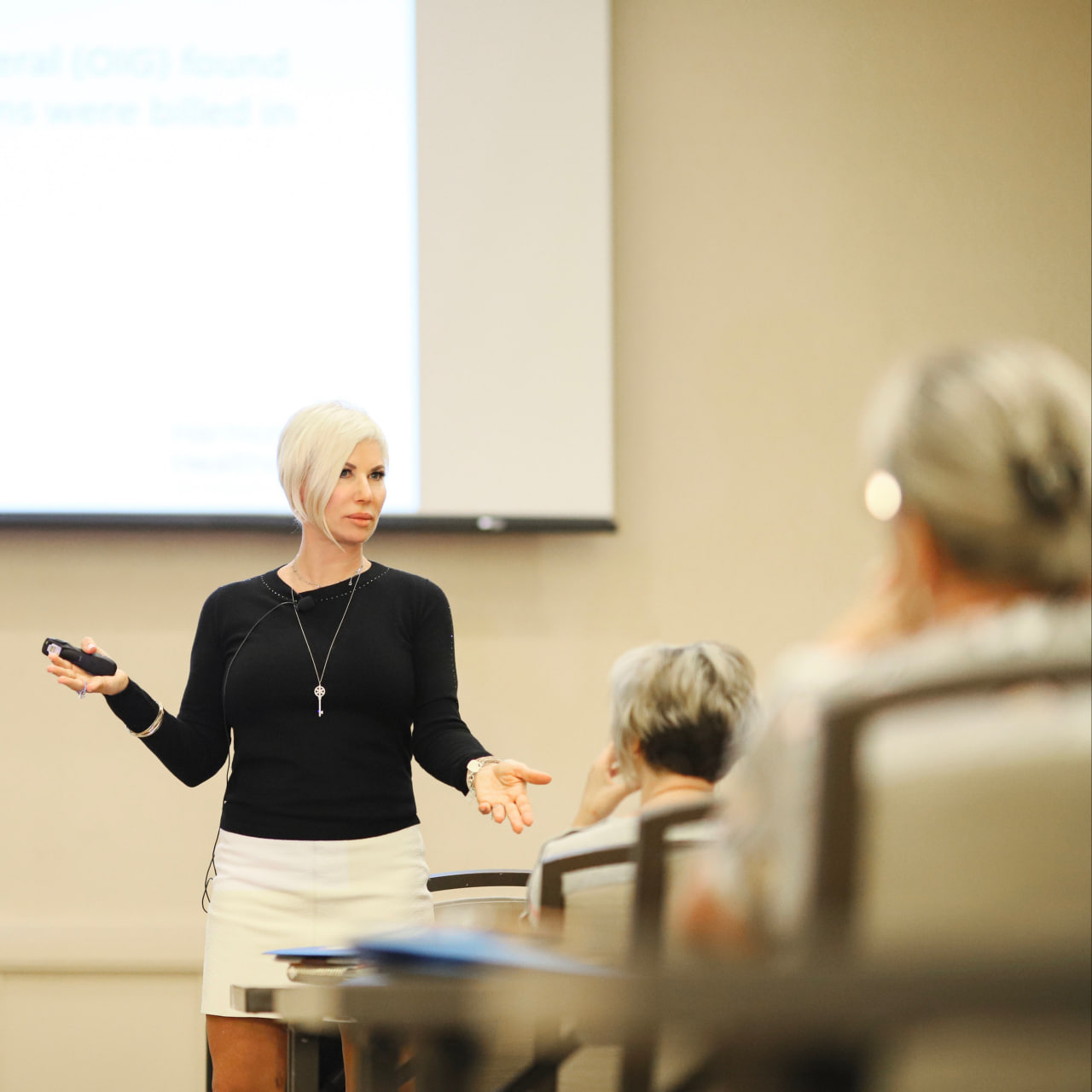
The COVID-19 pandemic has fast-tracked the average person’s understanding of basic and advanced infection control practices. To break the chain of contamination, the foundation upon which all effective infection control policies and practices are built, one must apply the concept of “clean vs. dirty.”
Below are the top 12 things you and nursing home staff need to know about COVID-19, Infection Control and Breaking the Chain of Contamination:
1. All surfaces are presumed to be contaminated and are treated as such. There is a hierarchy.
2. Clean items can travel to dirty areas, but once clean items travel into the dirty area, these items are no longer clean.
3. Dirty items should not go to clean areas.
4. Within the building, the entire COVID-19 isolation unit is considered "dirty."
5. Best practice is “what is brought on the unit stays on the unit.” To remember this, reference the saying "what happens in Vegas, stays in Vegas." 😊
6. At first, the "clean vs. dirty" concept appears to be a relatively easy task to accomplish with most supplies. However, staffing, meal services, and laundry services present challenges.
The “clean vs. dirty” hierarchy applies this concept within the unit itself:
7. While nothing on the isolation unit is perceived as “clean” by the facility, the concept of “clean vs. dirty” is applied within the unit.
8. If nothing travels from the contaminated patient rooms to the hallways, the risk of contaminated items leaving the unit is reduced, and the risk of staff contamination is also reduced.
Applying the principles of “clean vs. dirty” on the unit must not stop just because all patients on the unit are sick i.e., all COVID tested positive....(think what happens to the false positive when proper infection control practices are not applied....) Within the isolation unit, isolation patient rooms should be treated with the same processes and considerations as applied pre-COVID for one patient in a droplet precautions room on a unit of multiple non-isolated rooms.
The isolation patient room is “dirty.” The hallways, nursing stations, supply rooms, communal areas must be kept “clean.” Clean can travel to dirty, but once traveled, clean becomes dirty. Dirty cannot travel back through clean.
As much as feasibly and tactically possible, “what goes into the isolation room does not come out.” Anything that travels from room to room, such as staff, a Dynamap, a mechanical lift, etc., MUST be completely cleaned and sanitized before it leaves that room. And don’t forget contact time – if that Dynamap is wiped down with a product that has a 90 second contact time to be effective, then manually dried and immediately used on the next patient, it has not been cleaned. It is still dirty.
This is the primary reason it is recommended that the nursing home implement dedicated patient equipment and disposable supplies, whenever possible.
Any item that travels from a contaminated room to a contaminated room becomes a link in the chain of contamination.
For effective infection control, the chain of contamination must be broken.
To break the chain of contamination:
9. Strict cleaning of items especially when used with multiple patients.
10. PPE Usage i.e., donning and doffing.
11. Proper hand hygiene.
12. Staff must consistently follow droplet precautions at all times (unless PPE shortage).
The more links in the chain, the more opportunities for lapses in infection control practice.
Patient dedicated equipment and single-use disposable items offer a tactical advantage because they reduce the number of links in the chain of contamination, which in turn, reduces the opportunity for lapses.
For Example:
If a stethoscope does not travel from room to room or patient to patient, the chances of missing a cleaning or performing an inadequate cleaning between caregivers decreases by the number of patients on the unit down to zero. (That's Kris back of the napkin math.)
The below table from the Massachusetts Department of Public Health (DPH) helps visualize COVID-19 PPE Infection Control protocol.
The industry has been inundated with daily regulation changes causing significant difficulty with educating, training, and applying the most current infection control protocols during an already trying time. Of note, the expectations for isolation gown usage, i.e., donning and doffing, has posed significant confusion amongst providers. The most critical concept that must be reinforced with all staff is that the guidance during a supply shortage is not standard infection control practice. Once a facility is no longer lacking a supply of isolation gowns, a return to standard droplet precautions is required.
Kris B Harmony has a multitude of Infection Control Certification Courses coming up in 2021. Click Below to register.
Personal Protective Equipment (PPE) Used When Providing Care to Residents in Long Term Care***
|
Resident Type |
Recommended PPE |
Recommended Sign for Resident Room |
|
COVID Negative* Residents and COVID-Recovered Residents (>6 months from infection) When there are resident** or staff case(s) identified within the last 14 days in the facility.
|
Full PPE to include Facemask, Face Shield/Goggles, Gown, and Gloves. Gown use can be prioritized for high-contact resident care activities1. Gown and gloves must be changed between residents. |
COVID-Negative (with recent cases) Sign |
|
COVID Negative* Residents and COVID-Recovered Residents (>6 months from infection) When no resident** or staff cases are identified within the last 14 days in the facility. |
Facemask and Face Shield/Goggles |
COVID-Negative (without recent cases) Sign |
|
COVID-Recovered Residents (< 6 months from infection) (meet 10 d/24h threshold clearance) |
Facemask and Face Shield/Goggles |
N/A |
|
COVID-Positive Residents |
Full PPE to include N95 respirator or alternative (Facemask is acceptable if N95 respirator not available), Face Shield/Goggles, Gown, and Gloves. May consider extended use during shortages if no known co-infected residents. |
Isolation Sign |
|
COVID-Suspected Residents (i.e. Symptomatic, with test results pending) |
Full PPE upon room entry to include N95 respirator or alternative (Facemask is acceptable if N95 respirator not available), Face Shield/Goggles, Gown, and Gloves. Gown and gloves must be changed between residents. |
Isolation Sign |
|
Quarantined (i.e., New admission or exposed to a confirmed COVID case) |
Full PPE to include N95 respirator or alternative (Facemask is acceptable if N95 respirator not available, or if resident not known to have exposure to a confirmed COVID case), Face Shield/Goggles, Gown, and Gloves. Gown and gloves must be changed between residents. |
Quarantine Sign |
*“Negative” refers to a resident who has never tested positive.
**”Resident case” means a case that was acquired in the facility (i.e. not within 14 days of admission)
***Individuals infected or co-infected with a communicable disease (such as Clostridioides difficile) should be cared for using appropriate PPE, changed between residents.
.jpg?width=1514&height=594&name=Artboard%201@4x-100%20(1).jpg)


.png?width=208&name=Logo-KrisB%20(1).png)